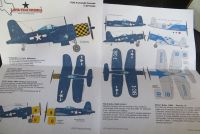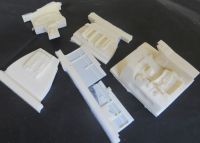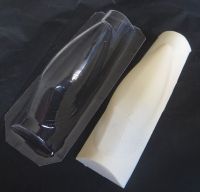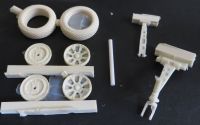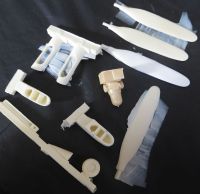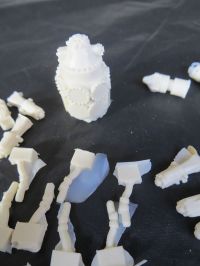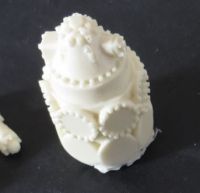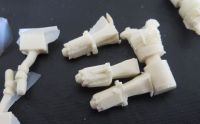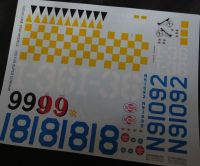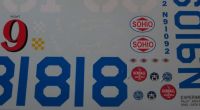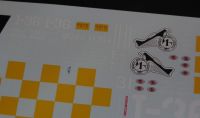Lone Star Models | 1/32 F2G Conversion
Reviewed by Mike Swinburne
Peek in the box - 1/32 Lone Star F2G Super Corsair Conversion
Retail: $110US at www.lonestarmodels.com
If you're like me, the Super Corsair with its bubble canopy and long nose housing a 4-row corncob radial engine is one of the best looking aircraft ever made without the slender lines of an inline engine. We've seen at least one conversion in 1/32 scale already, if not two, to convert existing 1/32 F4U kits into the warbird-come-racer and now Mike West of Lone Star Models has added his take on the plane with his latest resin conversion for the Revell kit.
So what’s in the box, you ask? There are around 80 resin parts plus clear vacuform canopy for this conversion. A great looking set of decals and two full color pages of markings round out box contents. You’ll need a Revell kit, or Trumpeter if you’re brave, for donor wings, landing gear, and the horizontal stabilizers. If you can’t find one in shops, the older releases can be found quite cheap on eBay. Panel lines are recessed so stock up on sandpaper and a good scriber for the revel parts as the kit has raised panel lines.
Mike West has been following some recent discussions about the quality of instructions in resin kits and his response with this conversion are quite well done with large color photos, two to a page, and sufficient construction notes. You get 17 pages of instructions this way and the larger photos make it much easier to figure out what goes where (Fisher Models, take note!).
Fuselage
The main and rear fuselage are each molded in two halves. The rear includes internal details for the tail gear well. Casting on the two rear fuselage parts and the left main fuselage half is nicely done, however the right main fuselage half has a section or two of very resin and some additional resin gunk that’ll need to be sanded off. These details were consistent across both of my copies of this set. Simply spend a few minutes sanding, fill the inside fuselage with epoxy or CA where it’s very thin, and you’re back in business. There are a few large locator pins inside the main fuselage halves to make assembly a breeze after you prepare the mating surfaces.
Tail Area
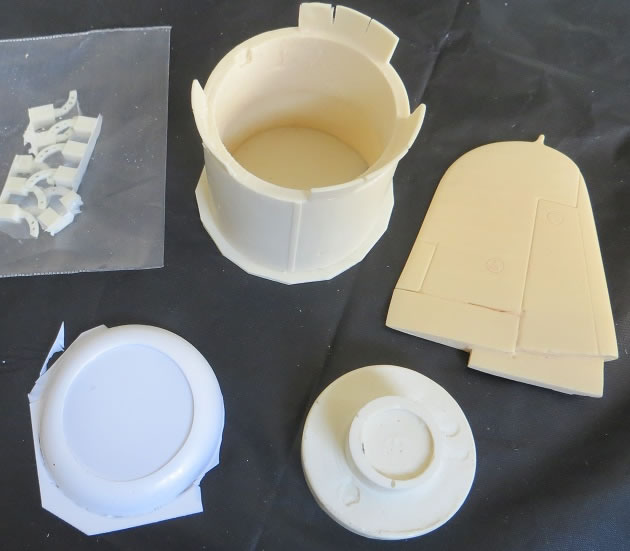
You’ll need to make a few parts of the tail strut from styrene but most of it is present. The tail included has the 12” extension; use the kit tail for the “regular” corsair tail that a few F2G’s had at one point or another.
Cockpit
You get 6 parts to make up the cockpit – front and rear bulkheads, floor, panel, and sidewalls. The seat bucket is molded to the floor and backrest to the rear bulkhead, and rudder pedals to the front bulkhead. Overall the detail looks very nice though you’ll want to add instrument decals to the panel. You’ll need to use the control column from the kit, also. There is one clear canopy included, and also a resin plug to make your own. I found the canopies in my samples to be not completely smooth so I’ll likely be trying my hand at making new copies with the resin plug. That said, the resin plug needs to be sanded smooth and polished as there appear to be one or two stray knife marks near the framing that are present in both my samples.
Wings
You get new oil cooler intakes for the wing leading edges and scoops to go inside them. They’ll look very nice with a bit of cleanup. The F4U diamond tread wheels and hubs that have been available for some time are included in this conversion and look great. The rest of the wings are stock from the kit and Lone Star will be releasing flaps and gear wells separately in the near future.
The Front End
Disappointingly, the fuselage air scoop was missing from both copies of my kit but Mike West has traditionally been very responsive to issues like this so I’m not too concerned about waiting a few more days for the part. The cowl ring is molded separate from the cowl and includes a number of stiffeners for internal detail before the engine would hide any other detail present. The corncob engine includes only the first two of the four rows of cylinders and all are individual parts. There is a lot of detail on the crankcase though the 2nd row of cylinders does not have bolt detail around it. Individual magnetos and exhausts round out the engine. The propeller hub looks great and it looks like the four new prop blades will look the part perfectly once the resin flash is cleaned up.
All you have to do at this point is figure out if you want to scribe panel lines on the plastic parts or fill the resin panel lines for a super smooth racer paint scheme. Decisions, decisions…
Markings
The decal sheet has some very nice detail on it as you’ll see in the close-up photos. There’s a note on the color diagrams that the yellow cowling checkerboard was mis-measured and will not fit the kit, so you’ll need to improvise your own to model this particular aircraft. The gray and blue racer included on the decal sheet will need a bit of your scratchbuilding skill to extend the fuselage air scoop all the way to the front of the cowl. I don’t think that’d be too difficult to do.
Overall
While no resin conversion this complicated is perfect, I definitely believe this will be your path of least resistance to build an F2G in large scale. Mike West recast remade the fuselage molds multiple times until he was certain they were right and his efforts do show in this large set that should lessen frustrations of converting a regular kit fuselage. Highly recommended for experienced builders and ambitious intermediate builders.
© Mike Swinburne 2012
This review was published on Saturday, January 05 2013; Last modified on Wednesday, May 18 2016

